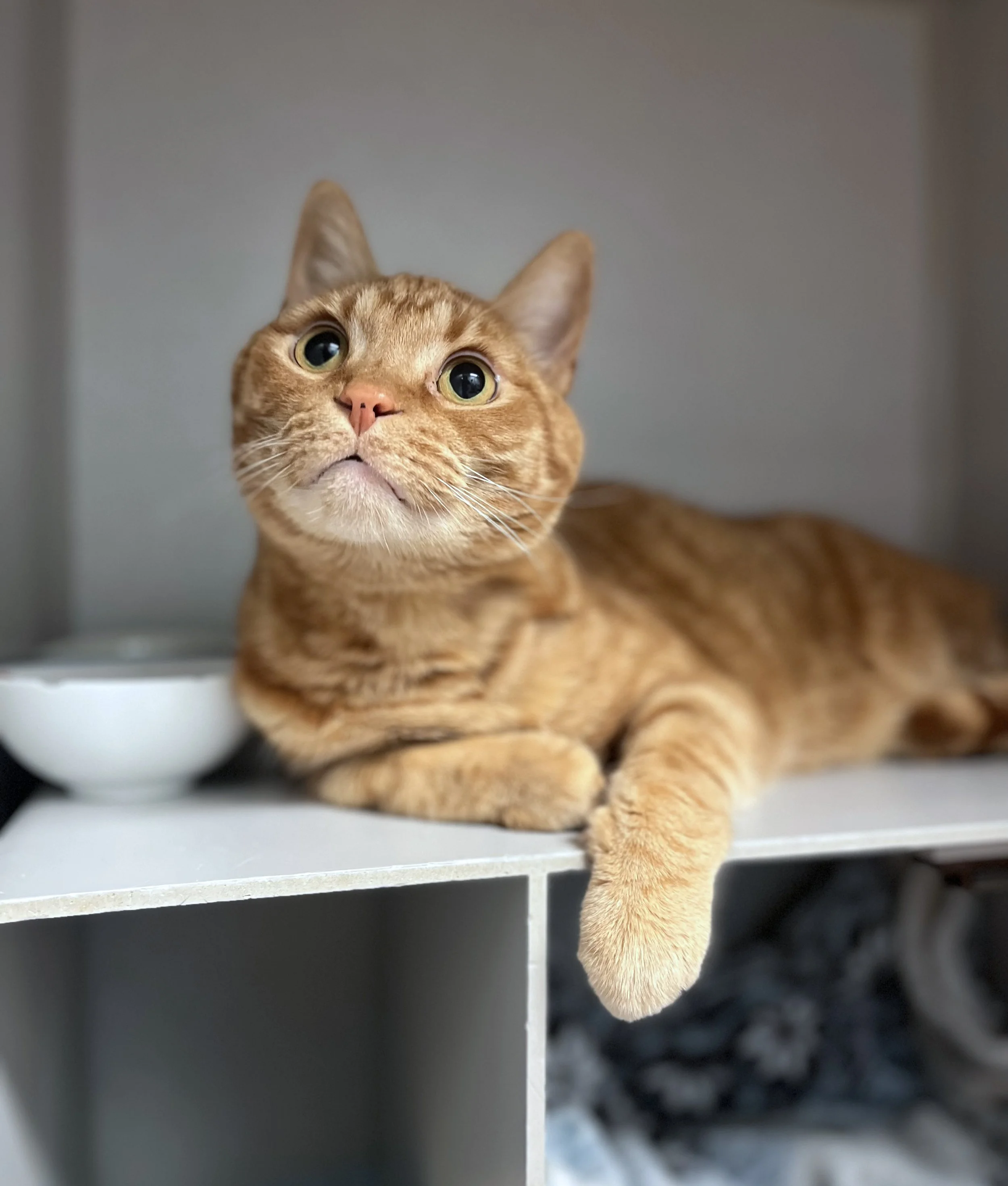Radioactive Iodine Treatment
Radioactive iodine (RAI) is the gold standard treatment for hyperthyroidism in cats.
It is given as a single, individually tailored, oral dose. RAI is rapidly absorbed into the thyroid and destroys abnormal thyroid cells. Since RAI exclusively targets the thyroid tissue, it does not harm any other body systems.
Thyroid cells store iodine to incorporate into thyroid hormone. When we give radioactive iodine, the thyroid cells take it up and because it is radioactive, it destroys the cells. The radiation travels only a few mm so only destroys thyroid tissue and does not affect other tissues in the body. Normal thyroid cells (not part of the tumour) will be dormant when a cat is hyperthyroid so they do not take up the radioactive iodine and are spared.
Our clinic focuses exclusively on treating hyperthyroid cats with radioactive iodine therapy. Click here to learn what to expect as a client.
Possible Outcomes of RAI
-
The first time cure rate of RAI treatment is approximately 98%.
-
At NWNM, the 2% of cats that do not cure with the initial dose of RAI will be re-treated at no additional cost. This is most likely to occur in cats that have been hyperthyroid for more than one year and have large thyroid tumours.
-
In rare cases—less than 1%—cats may develop hyperthyroidism again several years after successful radioactive iodine (RAI) treatment.
Recurrence is not a failure of the initial therapy but is due to the development of a new tumour in the thyroid gland. Recurrence generally occurs three or more years after the first treatment.
The good news is that most cats are excellent candidates for a second RAI treatment, which is safe and well-tolerated. If hyperthyroidism returns after a successful first treatment, a second RAI therapy is offered at half the current treatment cost.
-
Up to 10% of cats can have a lower than normal thyroid hormone level after RAI treatment (hypothyroidism).
This may be more likely to occur in cats with large thyroid tumours that have been growing for some time and have destroyed more of the normal thyroid tissue. Hypothyroidism is not a progressive disease and is a much safer and easier to manage condition than hyperthyroidism.
Other Approaches
At North West Nuclear Medicine for Animals, we focus exclusively on treating hyperthyroid cats with radioactive iodine therapy, but you may have heard of other treatments for feline hyperthyroidism.
-
Anti-thyroid drugs (methimazole) block the production of thyroid hormone temporarily but do not affect the underlying tumour and cannot cure hyperthyroidism. As the tumour continues to grow, the dose of medication will need to be increased and in many cats, will eventually be unable to control thyroid hormone production. Anti-thyroid drug levels will fluctuate throughout the day and overtime as the tumour grows, making it challenging to achieve consistent control of hyperthyroidism in many cats. This inconsistency can lead to ongoing organ damage. Drug therapy does not halt the underlying disease process, allowing the tumour to continue growing and potentially transform into a malignant cancer (adenocarcinoma).
Anti-thyroid drugs must be given twice daily for life. Side effects are common (15-20% of cats) and include nausea, vomiting, decreased appetite, severe facial itchiness, bone marrow damage, and liver damage. Frequent visits to your veterinarian and blood tests are required to monitor thyroid hormone levels and to adjust the dose of medication.
-
There is one prescription diet available (Hills y/d diet) to control hyperthyroidism. The diet is iodine restricted and starves the thyroid tumour of iodine which is needed to make thyroid hormone. Similar to drug therapy, diet therapy also allows progression of the disease and potential transformation to a malignant cancer. Since the diet relies on iodine restriction, cats cannot eat anything else, including treats and human food, and should be kept indoors only. An iodine restricted diet should not be fed to cats that are not hyperthyroid, making the use of this diet difficult in multi-cat households.
-
Surgery is no longer commonly performed for routine treatment of hyperthyroidism but may be considered as adjunctive therapy in cats with very large tumours or malignant adenocarcinomas.
Surgical treatment offers a potential cure for hyperthyroidism by removing part or all of the affected thyroid gland. However, the procedure requires general anesthesia, which poses increased risks in hyperthyroid cats due to their compromised health status. Additionally, postoperative complications are not uncommon, and the surgery carries inherent risks—including inadvertent damage to the laryngeal nerves or parathyroid glands, which play a critical role in calcium regulation.
Recurrence of hyperthyroidism is common after surgery due to involvement of the other lobe of the thyroid gland or ectopic thyroid tissue (thyroid tissue that exists outside the thyroid gland). Cats that have both thyroid glands removed surgically have a nearly 100% chance of being hypothyroid and thus requiring thyroxine supplementation.


